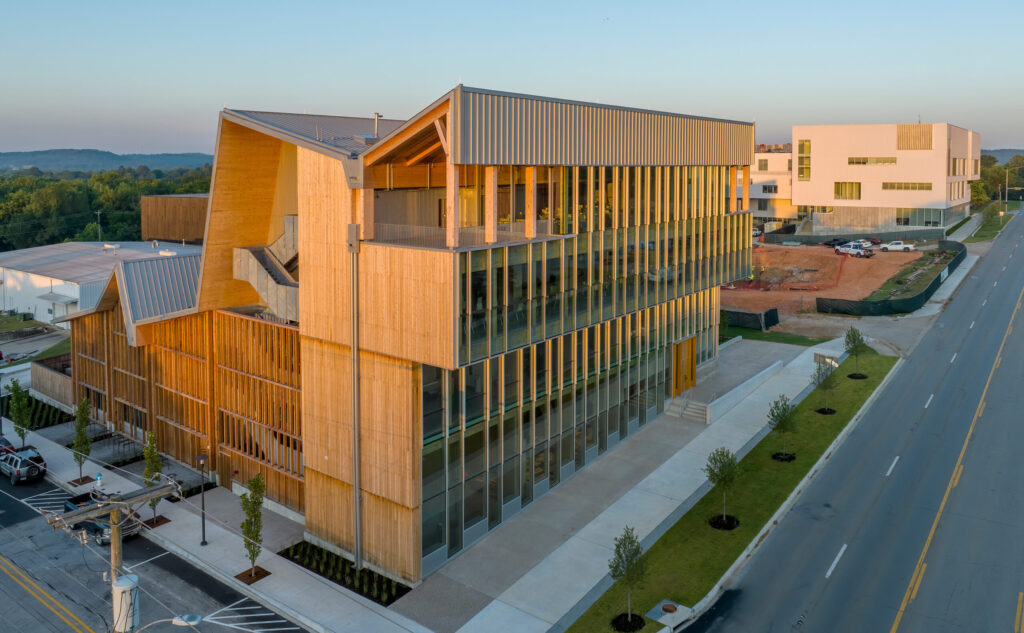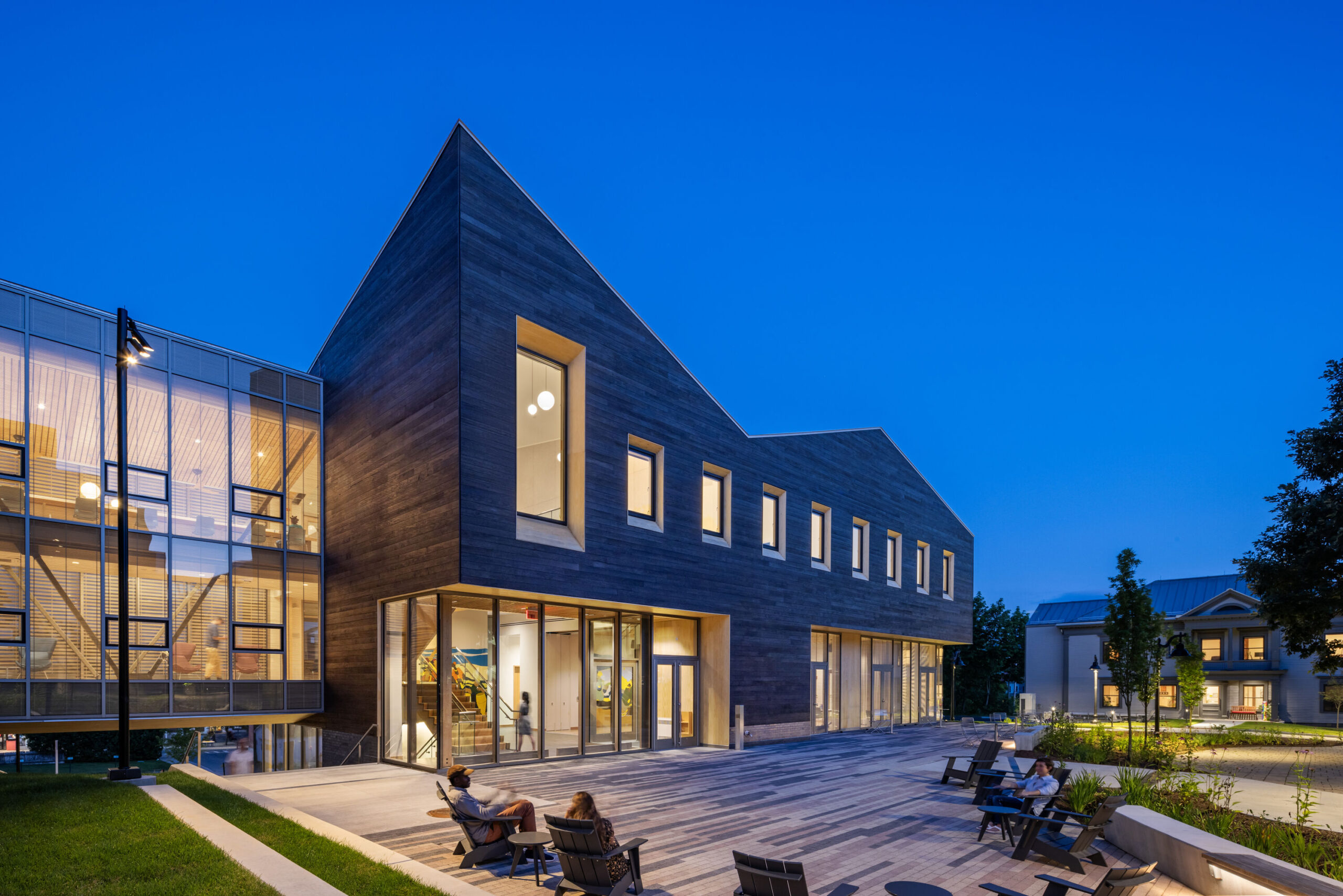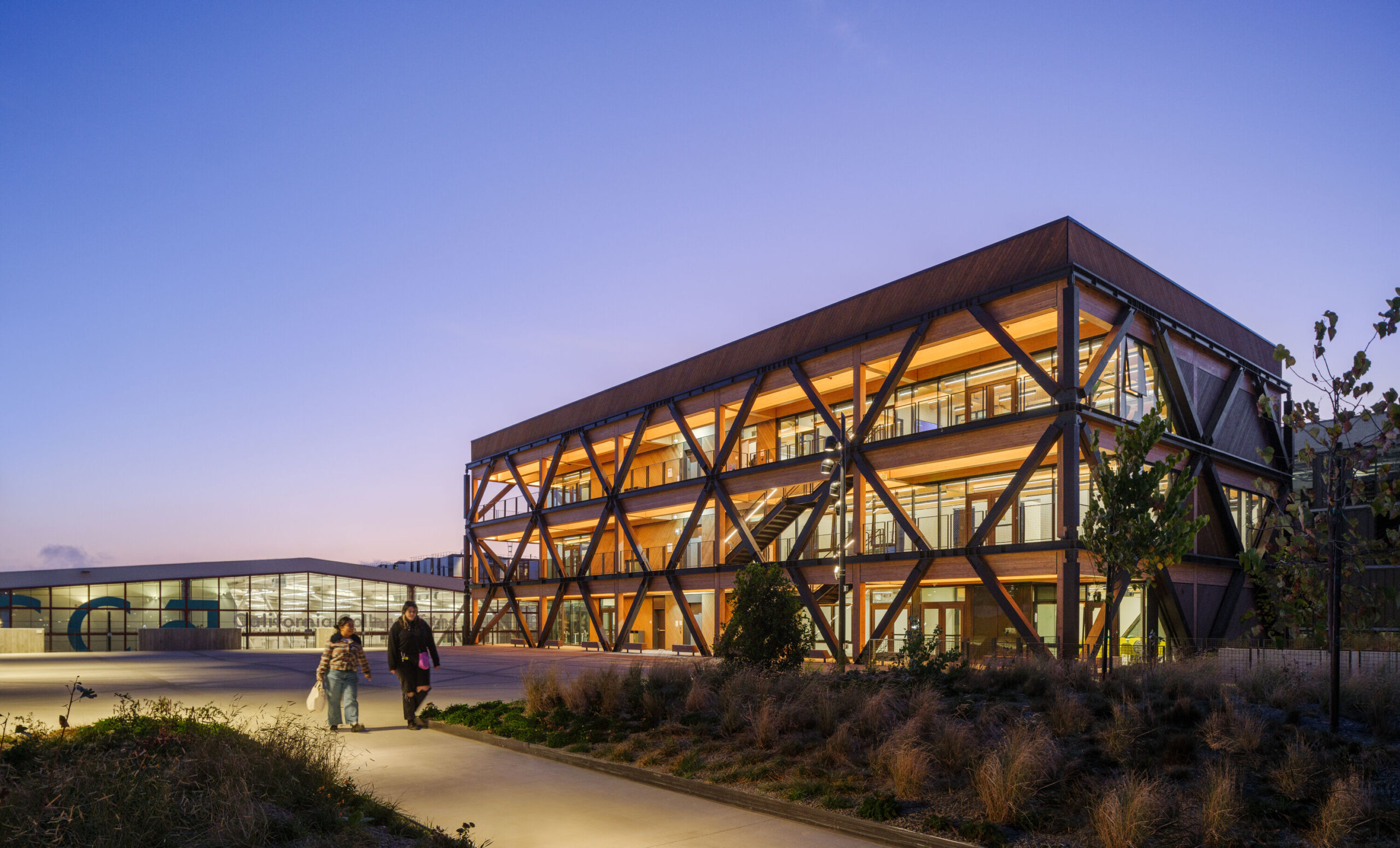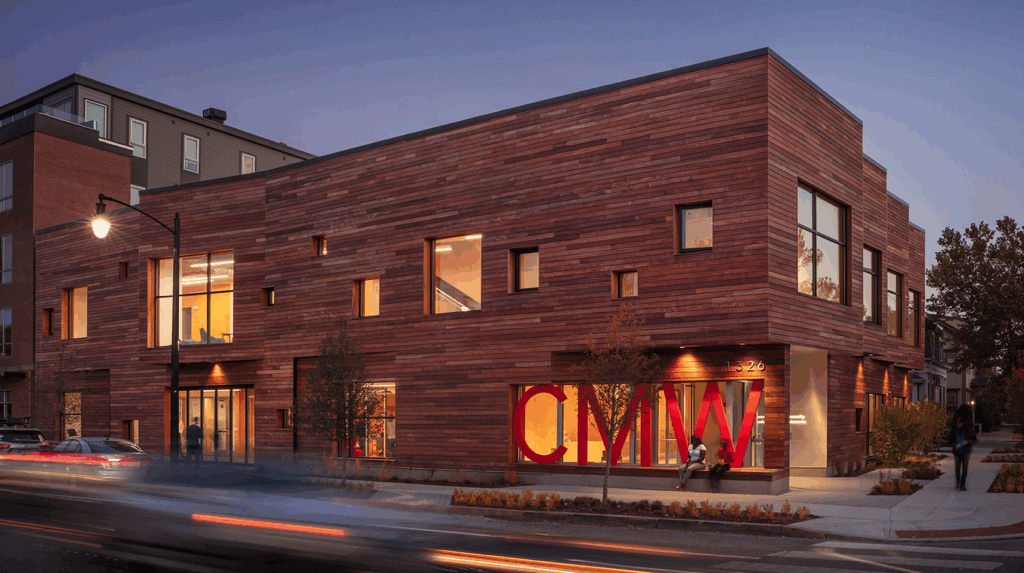Education, Mass Timber, Sustainability
Wood Innovation and Design Centre
A Milestone in the Evolution of Wood Buildings
The Wood Innovation and Design Centre (WIDC) was one of the tallest modern wood structures in the world during the time of construction at 29.5 metres high. The building has eight levels (six storeys, plus a ground floor mezzanine and a rooftop mechanical penthouse). It was the first of its kind in North America and introduced new methods of working with mass timber panels, specifically cross-laminated timber (CLT).

The shape of the building—a clean, modern box—is intentionally restrained. Its simplicity is a canvas for the beauty of the various woods and all their details, including Douglas-fir, western red cedar, hemlock, pine, and spruce, all sourced from British Columbia’s sustainable forests.
Due to its unique design and construction, it is a practical place for students to learn about wood products and building with wood.
The University of Northern British Columbia (UNBC) is one of the building’s main tenants and home to the Master of Engineering in Integrated Wood Design. The first floor holds a 75-seat lecture theatre, classrooms, a lab and office space on the upper floors.


This building represents an important milestone in the evolution of wood buildings in North America and, to some extent, the world. The project introduces new methods of working with mass timber panels and specifically cross-laminated timber.
Wood Use
The project drew on years of engineering and design knowledge, followed up with extensive research and testing.
The primary structure consists of an innovative combo of post-and-beam construction and built-up CLT floor panels. Glued-laminated timber (glulam) beams and columns were chosen for their known structural performance. Custom connectors allow the columns to run continuously from the concrete foundation to the roof, eliminating cross-grain bearing.
The structural concept behind WIDC is called “dry construction,” a technique that virtually eliminates the use of concrete above the foundation. That means the custom prefabricated structural wood components used can be easily disassembled and re-purposed at the end of the building’s functional lifespan.
The engineered wood products, including glulam, CLT, parallel strand lumber, and laminated veneer lumber, are used in the structural design and building envelope. Traditional wood products like dimensional lumber and plywood panels are also employed in various ways. Much of the building’s exterior features a rather unusual and striking type of cladding. A combination of naturally weathered and charred western red cedar siding. Charring changes the molecular structure of the wood through thermal conditioning of its surface, making it more resistant to flame and pests. The wood structure is exposed at the ceiling, providing a beautiful finish that speaks to the purpose and mission of the facility: a centre of excellence in research and design of engineered wood.
Project Details
- Architect
- MGA | Michael Green Architecture
- Size
- 51,882 ft2 (4,820 m2)
- Date Completed
- 2014
- General Contractor
- PCL Constructors Westcoast Inc.
- Location
- Prince George, BC
- Mass Timber Source
- Structurlam Mass Timber Corporation (Glulam & CLT); Brisco Manufacturing Ltd. (LVL)
- Owner
- Province of British Columbia
- Structural Engineer
- Equilibrium Consulting Inc.
- Wood Structure Installer
- Nicola Logworks Ltd.









